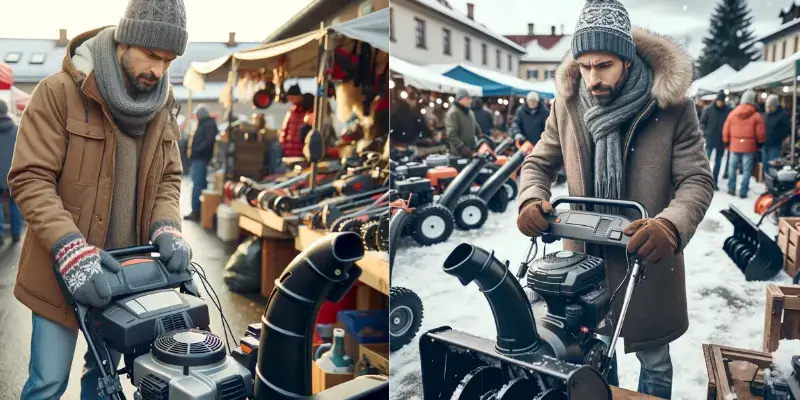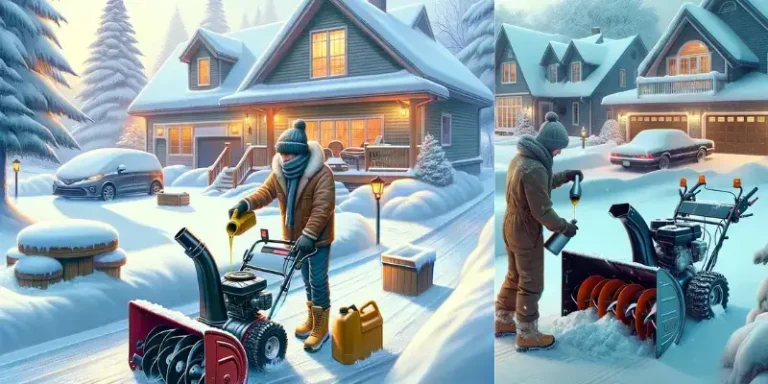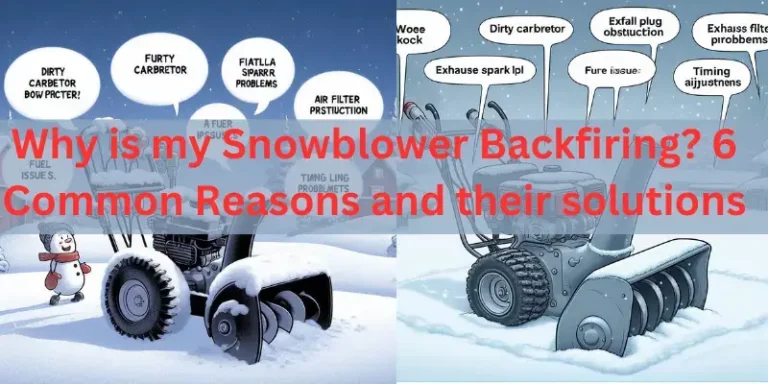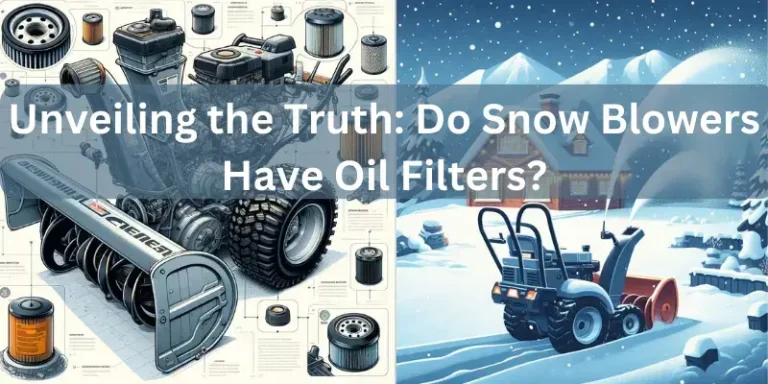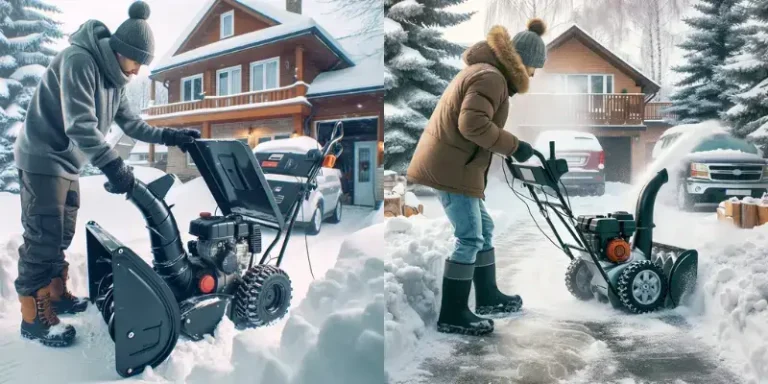How to Save Money and Time by Buying a Used Snowblower: A Complete Guide
Did you know that in the United States alone, over 17 million square feet of snow is shoveled every year? Imagine this: the average American spends over 42 hours a year shoveling snow. That’s nearly two full days!
Now, I’m here to help you reclaim that time and ease the strain on your back and shoulders. A snowblower can be a game-changer, and opting for a pre-owned one can be especially kind to your budget. My guide, “How to Save Money and Time by Buying a Used Snowblower,” is all about making an informed and wallet-friendly decision.
How Much Snow Do You Get?
The amount of snow your state receives annually is a crucial factor in determining whether you need a snowblower and, if so, what size and type.
“In states like Vermont, Maine, New Hampshire, and Colorado, where the average snowfall ranges from a hefty 68 to 90 inches per season, owning a snowblower isn’t just a luxury; it’s a necessity. If you’re living in these snow-rich states, you’re likely looking to upgrade or replace your current snowblower.”
On the other hand, most states in the U.S. receive about 25 to 50 inches of snow annually. While this may not seem overwhelming, it’s still a significant amount of snow to move using just muscle power and a shovel. This is where a snowblower can be a back-saving investment. If you’re in this category, you might be considering a snowblower but are hesitant about the cost of a new one.
Average Snowfall by State
Wiseover chart provides data on average annual snowfall in different states. Below table show the data of state that experience heavy snowfall among all states in United State.
| S.NO | State | Average Annual Snowfall |
| 1 | New Hampshire | 174.35 in |
| 2 | Maine | 92 in |
| 3 | Vermont | 80.2 in |
| 4 | Alaska | 79.6 in |
| 5 | Wyoming | 77.33 in |
| 6 | Michigan | 70.38 in |
| 7 | New York | 61.21 in |
| 8 | Utah | 58.2 in |
| 9 | Minnesota | 57.76 in |
| 10 | Massachusetts | 57.67 in |
Choosing the Right Snowblower
Heavy Snowfall Areas (68 – 90 inches): For residents of Vermont, Maine, New Hampshire, and Colorado, a two-stage snowblower is ideal. These machines are more powerful and can handle deep, heavy snow, clearing wider paths and throwing snow farther away.
Moderate Snowfall Areas (25 – 50 inches): In areas with moderate snowfall, a single-stage snowblower often suffices. These are less expensive than two-stage models and are easier to handle and store. They work well for medium snowfall and are perfect for clearing driveways and sidewalks.
The goal is to choose a snowblower that not only fits your budget but also effectively handles the typical snowfall in your area. A used snowblower can be a great way to get the functionality you need without the higher cost of a new model.
New Snowblower vs. Used Snowblower
When it comes to choosing a snowblower, deciding between new and used models is a significant consideration. Both options have their unique advantages and challenges, influenced by factors like price, warranty, quality, and availability.
Pros and Cons of Buying Used Snowblower
Pros
Cost-Effective: Used snowblowers are more budget-friendly, typically ranging from $150 to $600. This price range makes it accessible for those who need a snowblower but can’t justify the expense of a new one.
Durability: Older models are often made predominantly of metal, which can be more durable than some of the plastic components found in newer models.
Cons:
Potential for Hidden Damages: Like buying a used car, you need to be aware of the potential for hidden damages or missing parts.
No Warranty: Used snowblowers typically come without a warranty, meaning any repairs needed post-purchase will be an additional cost.
Tips and Warnings for Buying Used:
Inspect Thoroughly: Look for signs of wear and tear, and rust, and check if all parts are intact and functioning.
Test Before Buying: Always test the snowblower to ensure it starts and operates smoothly.
Negotiate: Be prepared to negotiate the price, especially if you notice minor issues that you’re willing to fix yourself.
Avoid Unreasonably High Prices: Be wary of used snowblowers priced close to the cost of new models.
In summary, while new snowblowers offer the latest technology and the security of a warranty, they come at a higher cost. Used snowblowers, although requiring careful inspection and lacking a warranty, can provide significant savings and often feature more durable construction. The decision ultimately depends on your budget, the level of snowfall you’re dealing with, and your comfort with potential maintenance and repairs
Difference Between Snowblowers: Single-Stage and Two-Stage
Snowblowers are essential tools for efficient snow removal, and they come in two primary types: single-stage and two-stage. Each type has its unique mechanism and is suited for different snow conditions.
Single-Stage Snowblowers:
How They Work: Single-stage snowblowers have a single auger that scoops up the snow and throws it out through the chute in one motion.
Pros: They are lightweight, easy to maneuver, and ideal for clearing snow from small to medium-sized driveways and sidewalks. They are also more affordable and take up less storage space.
Cons: Single-stage snowblowers are less effective with wet, heavy snow and are not suitable for large, expansive areas. They usually have a shorter throwing distance for snow.
Two-Stage Snowblowers:
How They Work: In two-stage snowblowers, the first stage involves an auger breaking up the snow, and the second stage uses an impeller to throw the snow out of the chute.
Pros: These are more powerful, and capable of handling heavy, wet snow and clearing larger areas. They have a greater throwing distance and can tackle uneven terrain and deeper snow.
Cons: Two-stage snowblowers are more expensive, heavier, and require more storage space. They are also more complicated to operate compared to single-stage models.
Comparison:
Speed and Power: Two-stage snowblowers are more powerful and faster at clearing snow, especially in large and challenging areas.
Capacity and Fuel Efficiency: Two-stage models typically have a larger capacity and may be more fuel-efficient for big jobs, but for small tasks, a single-stage is more economical.
Maneuverability and Cost: Single-stage snowblowers win in terms of maneuverability and cost. They are more user-friendly, especially for those who need to clear smaller areas..
What to Look for When Buying a Used Snowblower
Buying a used snowblower can be a great deal, but it requires careful inspection to ensure you’re getting a reliable machine. Here are common problems to look out for and a step-by-step guide to inspecting a used snowblower.
Common Problems in Used Snowblowers:
Rust: Check for significant rust, especially on critical components. Surface rust is common but deep rust can weaken the structure.
Fuel Lines: Look for cracks or brittleness in the fuel lines. Brittle or damaged fuel lines can leak and pose a fire hazard.
Tires: Inspect the tires for wear and tear. Bald or cracked tires can affect the snowblower’s traction and efficiency.
Bushings and Bearings: Worn bushings and bearings can lead to excessive vibration and noise. Check for any play or unusual movement in these parts.
Auger: Ensure the auger blades are in good condition. Bent or dull blades can affect the snowblower’s performance.
Step-by-Step Inspection Guide:
Visual Inspection:
- Begin with a general visual inspection of the snowblower.
- Look for any apparent damages, missing parts, or excessive wear.
Check the Engine:
- Examine the engine for any signs of oil leaks.
- Check the oil level and condition.
Inspect the Auger:
- Look at the auger blades for wear or damage.
- Rotate the auger by hand (with the machine off) to ensure it turns freely.
Examine Fuel Lines and Tank:
- Inspect the fuel lines for cracks.
- Look inside the fuel tank for rust or debris.
Check Belts and Cables:
- Belts should be intact, without cracks or significant wear.
- Cables should move freely without fraying.
Evaluate the Tires:
Check for adequate tread and look for any signs of dry rot or cracks.
Test Start the Snowblower:
- Start the snowblower to make sure it runs smoothly.
- Listen for any unusual noises.
Test Controls and Safety Features:
- Ensure that all controls are working correctly.
- Check safety features like shut-off mechanisms
Operational Test:
If possible, test the snowblower with actual snow or a simulated condition.
Tools and Materials Needed:
Flashlight: For better visibility in dim areas.
Screwdriver: To open any covers or compartments.
Cloth: To clean parts for a better inspection.
Gloves: For safety during inspection.
Signs to Look For:
- Unusual noises or vibrations during operation.
- Difficulty in starting or irregular running.
- Any leaks or drips from the engine or fuel system.
By following these steps, you can ensure that you’re making an informed decision when purchasing a used snowblower. Remember, a thorough inspection can save you from future expenses and hassle.
Where to Buy a Used Snowblower
Finding the right place to buy a used snowblower is almost as important as choosing the snowblower itself. Various platforms and locations offer different advantages and drawbacks. Let’s explore some popular options:
Craigslist:
Pros: Wide variety of choices, potential for great deals, and local options to avoid shipping costs.
Cons: No buyer protection, the potential for scams, and quality can be unpredictable.
eBay:
Pros: Buyer protection in place, a wide range of options, and detailed seller ratings.
Cons: Usually involves shipping, which can be costly for large items like snowblowers, and limited ability to inspect the item in person before purchase.
Facebook Marketplace:
Pros: Easy to find local sellers, possible to negotiate prices, and you can often test the snowblower before buying.
Cons: Like Craigslist, there’s a risk of scams and no formal buyer protection.
Local Dealers:
Pros: Possibility to find refurbished models, some level of quality assurance, and often a limited warranty.
Cons: Prices may be higher than peer-to-peer platforms, and inventory might be limited.
Garage Sales:
Pros: Opportunities for very low prices and the ability to inspect and test the snowblower in person.
Cons: Availability is hit or miss, and there’s usually no option to return.
Comparing Options:
Availability and Variety: Online platforms like eBay and Craigslist often offer a wider range of models, whereas garage sales and local dealers might have limited options.
Price: Peer-to-peer platforms and garage sales typically have lower prices, but local dealers may offer better value in terms of quality and reliability.
Safety and Convenience: Local dealers and garage sales allow for in-person inspection, which is safer in terms of ensuring product quality. Online platforms offer convenience but come with the risk of scams and the inability to inspect the product personally.
When buying a used snowblower, it’s important to weigh these factors based on your specific needs and preferences. Whether you prioritize price, safety, convenience, or variety, there’s an option out there that’s right for you. Remember, doing your homework by checking reviews and guides on reliable sources can greatly enhance your buying experience.
Conclusion
In my guide, “How to Save Money and Time by Buying a Used Snowblower,” I’ve covered key points to help you make a smart purchase. I emphasized assessing local snowfall, compared new and used snowblowers, explained single-stage vs. two-stage models, provided inspection tips, and discussed buying options. Visit [SnowBlowers.net] and Family Handyman for more details. Get ready to conquer winter efficiently and economically with the right snowblower.

About Naveed A Hashmi
In my childhood, I used to see my parents while working in the land, for these reasons today I have been serving the same as our own tradition and culture. I thus love to stay in it, because I want to learn something advanced and new so that I may improve my farm’s contour and help others with my experience.

